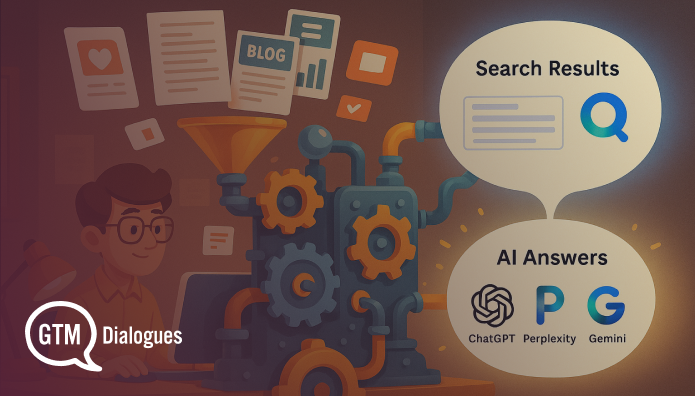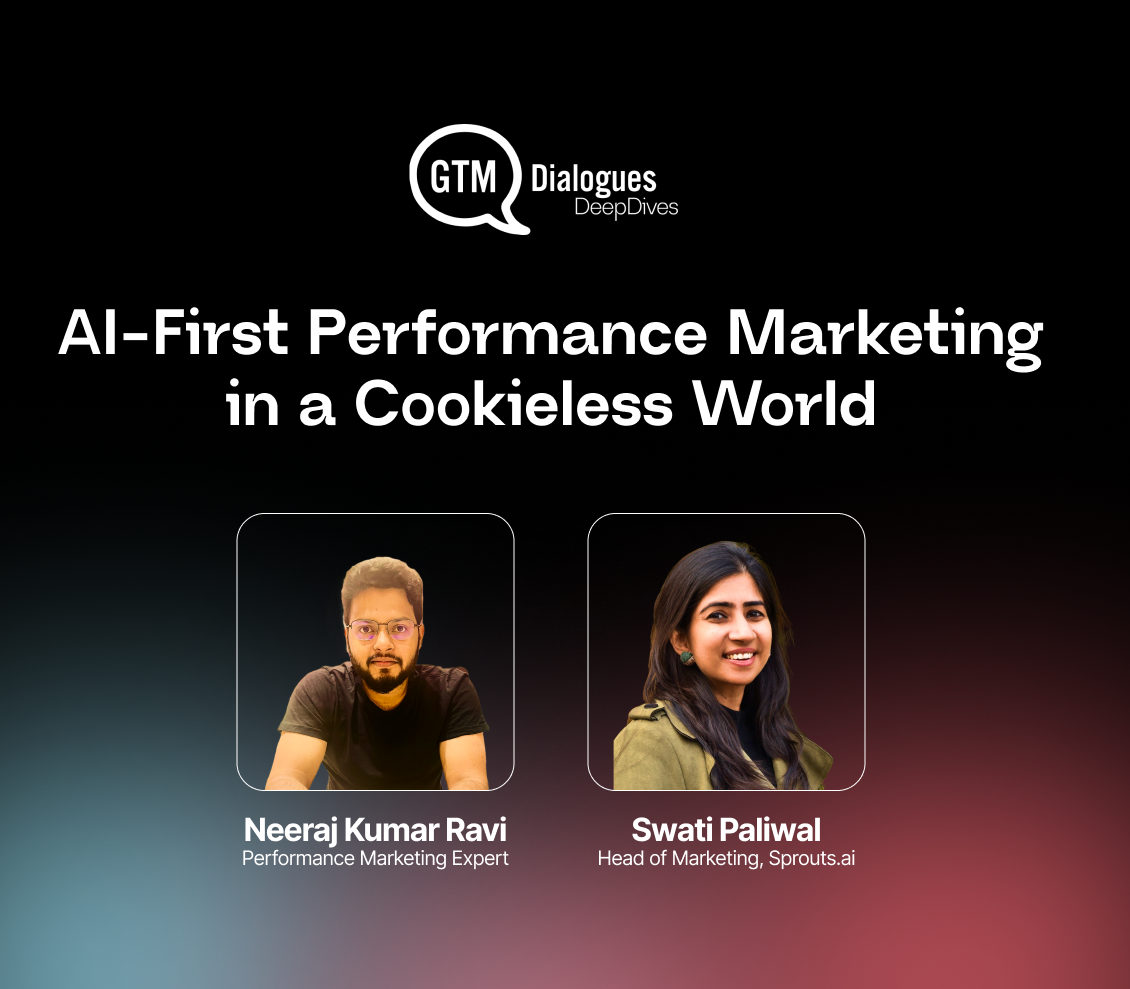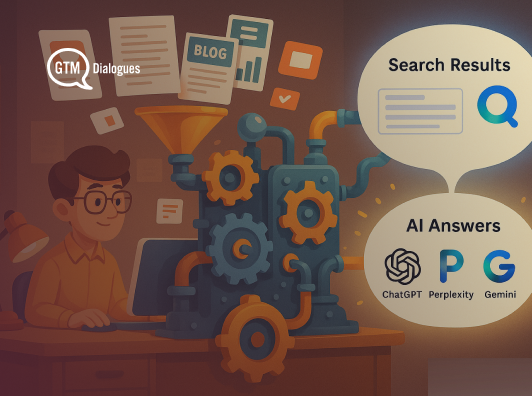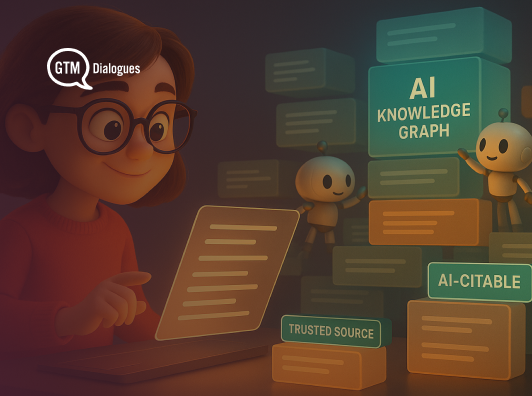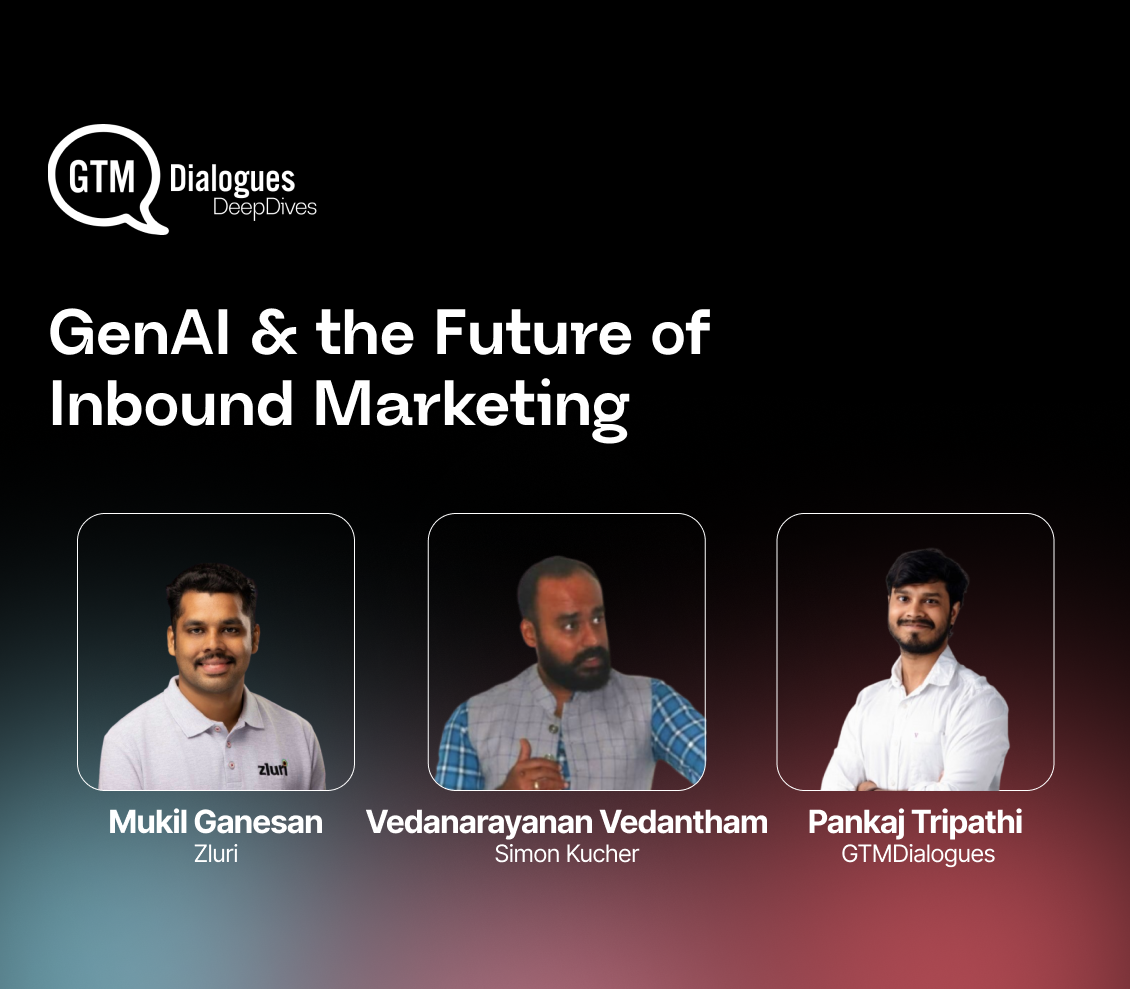Every month, more people turn to AI tools like ChatGPT, Perplexity, and Gemini for answers. The reason is simple - these tools deliver direct and conversational responses, often citing only a handful of trusted sources.
AI-driven searches are expected to surpass Google by 2028. That means your business content will need to show up not just in search results, but inside AI-generated answers that shape buyer decisions long before they reach your website.
This creates both risk and opportunity.
If your content isn’t optimized for AI discovery, you might be invisible to the very audience researching your category.
Can you miss that? I guess, not.
In this article, I’m going to define a roadmap you can adopt to optimize the entire content process to become visible to both search engines and AI tools.
Let’s start with the basics first, and learn content optimization.
What is Content Optimization (CO)?
Content Optimization (CO) is the process of making digital content both discoverable and credible. It ensures that when someone searches on Google or asks a question in ChatGPT, your content is considered a trustworthy response. Unlike basic publishing, CO treats every piece of content as a knowledge asset, something that needs to be understood and reused by both humans and machines.
Here are four pillars of Content Optimization:-
Pillar 1 - Keywords and Search Intent
Keywords are the first and most important pillar in Content Optimization. Keywords are reflections of how people express their needs.
For example, a user searching “What is SaaS onboarding?” is seeking an explanation, while someone typing “best SaaS onboarding tools” is closer to making a purchase decision.
Content optimization is about aligning with these different layers of intent so that your content answers not just the query but also the underlying purpose. This alignment explains why a comparison article, such as “Slack vs. Microsoft Teams,” often performs better than a vague overview of collaboration tools because it matches the specific scenario the user is in.
Search engines and AI tools reward content that directly addresses intent because it reduces friction in delivering answers.
Pillar 2 - Domain Authority
Domain authority represents the digital reputation of your website. It signals whether you are a source worth trusting compared to others covering the same topic.
For example, when breaking news occurs, Google almost always surfaces results from established media houses like The New York Times or BBC rather than from a small business blog, even if both are reporting the same story.
You need to understand that authority is cumulative. Being mentioned across respected channels, cited in industry reports, or quoted in forums builds recognition over time.
Consistency also plays a role. Websites that publish reliably on a given subject establish stronger reputations than those that appear sporadically. For AI systems, this reputation becomes a shortcut to deciding which content can be safely reused.
Pillar 3 - Content Quality and Structure
Search engines and AI systems do not read articles line by line the way humans do. Instead, they scan and break content into smaller, standalone sections that can be extracted as snippets.
This means that how you structure your content becomes as important as what you say. Clear headings, concise summaries, and self-contained passages increase the likelihood of being cited.
Consider an article that defines “What is a growth funnel?” in two crisp sentences at the top of a section. That definition is far more likely to appear in a Google snippet or an AI-generated response than one hidden deep in a long paragraph. Readability and scannability are signals of quality in the modern search environment.
Pillar 4 - Technical Setup
The technical foundation of your website determines whether your content can even be discovered. Search engines and AI crawlers rely on clean, semantically structured pages to interpret information correctly.
If a site loads slowly, hides key details behind scripts, or blocks AI crawlers such as GPTBot, then the content is effectively invisible.
On the other hand, schema markup, proper heading hierarchies, and accurate metadata give machines a clear roadmap for understanding your page. Accessibility matters too. Adding alt text to images or ensuring mobile responsiveness not only improves user experience but also makes your content easier for algorithms to classify and reuse.
In this way, technical setup doesn’t change the message of your content, but it shapes how reliably that message is surfaced.
What is Content Process Optimization (CPO)?
Content Process Optimization is the practice of building a consistent, authority-driven content system that covers research, creation, distribution, and perception to stay visible across search engines and AI tools.
If Content Optimization (CO) is about refining individual pieces of content, Content Process Optimization (CPO) is about orchestrating the entire system. It takes optimization beyond the page and ensures that your content, once created, is consistently distributed, trusted, and surfaced across multiple environments, including AI-driven platforms.
Think of CPO as the evolution and next step of CO. Content Optimization is a subset of this larger process.
You can have well-optimized blogs, but without CPO, they might remain confined to your website or, at best, rank only in traditional search.
CPO widens the scope. It ensures that your content also shows up in AI-generated responses by keeping your messaging consistent across channels and having enough external signals, such as PR mentions.
Four pillars define Content Process Optimization:
Pillar 1 - Consistency in Messaging
As the first step, you need to ensure that your brand’s voice and positioning stay consistent across every touchpoint. An article on your website, a LinkedIn post by your founder, and a Reddit thread discussing your product should all reflect the same core message.
Inconsistent messaging creates confusion not just for people, but also for AI systems that rely on patterns to decide whether to cite your content.
Pillar 2 - Uniqueness and Authority
While CO emphasizes authority at the website level, CPO extends it to the uniqueness of your perspective. AI tools are trained on vast amounts of generic content, so they give preference to sources that provide something original. Fresh dataset, a first-hand example, or an expert quote could add to this uniqueness.
For instance, an HR tech startup that publishes original employee retention benchmarks will have a stronger chance of being cited than one that repeats statistics already available on Gartner. Therefore, you need to focus on creating and amplifying content that is both unique and authoritative.
Pillar 3 - Diversity of Distribution
Unlike traditional SEO, which is primarily about ranking on Google, the aim of CPO is to ensure that your content reaches audiences across many fragmented channels. This includes not just your website, but also press mentions, community forums, podcasts, newsletters, and even how your brand is referenced in AI training data.
A whitepaper that lives only on your website might be invisible to many decision-makers, while one amplified through PR coverage, LinkedIn shares, and conference talks will establish wider influence. Remember that distribution is an ongoing process rather than a one-time upload.
Pillar 4 - External Perception and Mentions
Perhaps the most overlooked pillar is how others talk about you. AI tools don’t just read what you publish; they also read what others say about you in media articles, online communities, and user forums.
A software company consistently mentioned positively in G2 reviews, LinkedIn discussions, and industry newsletters will carry more weight in AI-generated responses than one that only promotes itself. In this sense, perception optimization becomes just as critical as content optimization.
Staying true to these four pillars, CPO covers the entire lifecycle of content. It includes all the steps in the journey of the content from research, preparation, content writing, optimization (where CO fits in), repurposing, distribution, and finally managing perception in the market. CPO simply doesn’t end when you publish; it’s about ensuring that every stage of the process is aligned to maximize visibility, trust, and long-term impact.
Content Optimization vs. Content Process Optimization: Why the Distinction Matters
It’s easy to assume that if you’ve optimized your content, you’ve done enough. But there’s a critical difference between optimizing a single piece of content (CO) and optimizing the entire content process (CPO).
Content Optimization makes an individual page stronger. It ensures that one blog post or landing page can rank higher on Google or be parsed more effectively by AI. Content Process Optimization, on the other hand, is about scale and sustainability. It ensures that all your content, across formats and channels, works together, is consistently reinforced by external signals, and is visible in both traditional search and AI-driven discovery.
The table below captures the key distinctions:
Remember that CO sharpens individual pieces, while CPO builds a resilient content ecosystem. Businesses that stop at CO might still get found in Google today, but without CPO, they risk becoming invisible in the AI-first world that is fast approaching.
Step-by-Step Guide to Content Process Optimization
Content Process Optimization can feel abstract until you see it broken down into specific steps. The truth is that not every piece of content gets equal visibility, and not every channel can be tracked the same way. CPO bridges this gap by creating a systematic process from research to perception.
Step 1: Research the Landscape
Start with keyword and topic research, but extend it into AI prompt research. Don’t just check what ranks on Google; type buyer-style prompts into ChatGPT, Gemini, or Perplexity. For example, search “Best SaaS onboarding tools for startups”. If your competitors show up in the cited results and you don’t, that’s a gap you need to fill.
Once you finalize a particular set of keywords, test it for different prompt types - definitions, comparisons, and statistics. Our AI indexing experiments showed that statistical prompts (e.g., “How many startups use HubSpot?”) were most likely to trigger citations.
Step 2: Audit Indexed vs. Non-Indexed Content
You don’t put everything on your website or social media. Some assets are created and sent over email or used internally. These content pieces may have crucial information about your business that you want your customers to know, but they aren’t indexed anywhere. Hence, neither search engines can access them, nor AI tools.
Mapping this helps prioritize your efforts.
Some of your unindexed content might contain useful information to your buyers, but AI tools can’t find it because it’s ‘hidden’ from them. One random and casual testimonial in a Slack community, one specific product feature in your sales deck, one CSR initiative in your local newspaper - all this can go unnoticed if you don’t publish them where AI tools can find them.
Sometimes, these pieces are not good enough as a stand-alone response, but they add value to a more detailed response to a specific query.
Step 3: Prepare and Align Messaging
Consistency of messaging is critical before you even write. You need to ensure that your brand positioning is repeated across channels. If your website calls you “an affordable SaaS tool” but your founder’s LinkedIn says “enterprise-ready solution,” AI systems get mixed signals.
To tackle this, create a messaging matrix (product description, value prop, differentiators) and ensure it is mirrored across your website, social, PR, and even customer reviews.
Step 4: Write and Optimize Content
This is where CO (Content Optimization) becomes part of CPO. Your content must be written for both humans and machines.
- Chunk content into reusable blocks: AI tools cite sections that can stand alone. Always begin a section with a crisp summary sentence followed by context.
- Structure FAQs within articles: Search engines and AI pull FAQ schema directly into answers. Embedding FAQs improves both SERP snippets and AI visibility.
- Add first-party data or original insights: A statistic unique to your research makes your article “uncopyable” and more likely to be reused. For instance, “72% of SaaS buyers prefer demo-led onboarding” (if from your dataset) has higher citation value than reusing Gartner’s stats.
Step 5: Repurpose into Multiple Formats
Repurposing multiplies touchpoints, which is key for CPO. One research-driven article should live as a LinkedIn carousel, a podcast talking point, and a short-form video.
A blog on “AI in SaaS customer support” can become a slide shared on LinkedIn, which then gets quoted in a community thread, which AI tools might later crawl and reuse.
Step 6: Distribute Across Channels
CPO doesn’t stop at your owned media. It requires placing content in high-authority ecosystems where AI is more likely to pick it up.
Treat PR as part of SEO for AI. A mention in TechCrunch or Economic Times is more likely to surface in Perplexity or Gemini than your own blog post.
Step 7: Manage Perception and Mentions
CPO extends into how others talk about you. AI tools aggregate external voices - reviews, user forums, newsletters. A strong base of positive mentions signals credibility.
For example, G2 reviews mentioning “best for remote onboarding” not only influence buyers directly but also shape how AI systems categorize your product.
Monitor AI responses quarterly. If your brand isn’t cited, identify who is, and then secure backlinks, PR, or partnerships with those sources.
These steps combined create a process:
Research → Writing → Optimization → Distribution → Perception
Done right, this system ensures that your content not only ranks but also appears in AI-driven answers, reinforcing your authority across fragmented buyer journeys.
Why Businesses Must Adopt CPO Today
Relying on traditional SEO alone is no longer enough. Buyers are shifting where they search, and AI tools like ChatGPT, Perplexity, and Gemini are already reshaping discovery.
The stakes are clear:
- SEO-only strategies are declining in influence. Even if your blog ranks on Google today, it may never surface in an AI answer tomorrow.
- AI-driven citations favor authority and perception. A single quote in TechCrunch can outweigh dozens of well-written blogs on your own site if those blogs are not structured or distributed correctly.
- Content ecosystems are fragmented. Your buyers don’t just read websites - they listen to podcasts, join Slack groups, browse Reddit threads, and ask AI tools. CPO ensures your content meets them across all these fragmented touchpoints.
Content Process Optimization is the only way to build resilience in an environment where AI, not search engines, will increasingly control visibility.
At GTMDialogues, we help B2B SaaS founders and GTM leaders implement Content Process Optimization through:
- Content Audits: Identify indexed vs. non-indexed assets, both for search engines and AI tools.
- AI Indexing Strategies: Structure content so it can be parsed and reused at a chunk level in AI answers.
- Distribution Playbooks: Amplify content through PR, communities, and partnerships that AI tools already trust.
- Messaging Consistency Frameworks: Align content across websites, founder-led posts, and user-generated spaces.
- Perception Management: Track reviews, mentions, and external discussions to strengthen authority signals.
Talk to us to future-proof your content strategy and ensure your brand shows up where your buyers are searching next.
Frequently Asked Questions
What is the difference between Content Optimization (CO) and Content Process Optimization (CPO)?
Content Optimization focuses on improving individual pieces of content so they rank better on Google and can be reused by AI. Content Process Optimization covers the entire lifecycle - from research and writing to distribution, perception, and AI visibility, making it a broader, future-proof strategy.
Why is Content Process Optimization more important now than ever before?
Because AI-driven search is growing rapidly. Without CPO, your content may not appear in these AI-generated answers, even if it ranks well on search engines today.
How do I know if my content is optimized for AI searches?
Test your category-related prompts in AI tools. If your competitors are cited and you aren’t, your content likely lacks the structure, authority, or distribution needed for AI visibility. Structured FAQs, original data, and citations in authoritative sources increase your chances of being surfaced.
Does Content Process Optimization replace Search Engine Optimization?
No. SEO is still foundational, but it is now only one part of the bigger process. CPO incorporates SEO (via CO) but extends into distribution, consistency, and perception - all of which influence whether you appear in both search results and AI answers.
What kinds of businesses benefit most from CPO?
Any business that relies on digital visibility, especially B2B SaaS companies, startups, and thought-leadership-driven brands. For these businesses, authority and perception shape buyer decisions long before a sales conversation begins.
How quickly can I see results from CPO?
Traditional SEO improvements may take months, while some CPO-driven gains (like PR mentions surfacing in AI responses) can happen within weeks. The full value of CPO compounds over time, as consistency and authority build a stronger brand presence across fragmented channels.

